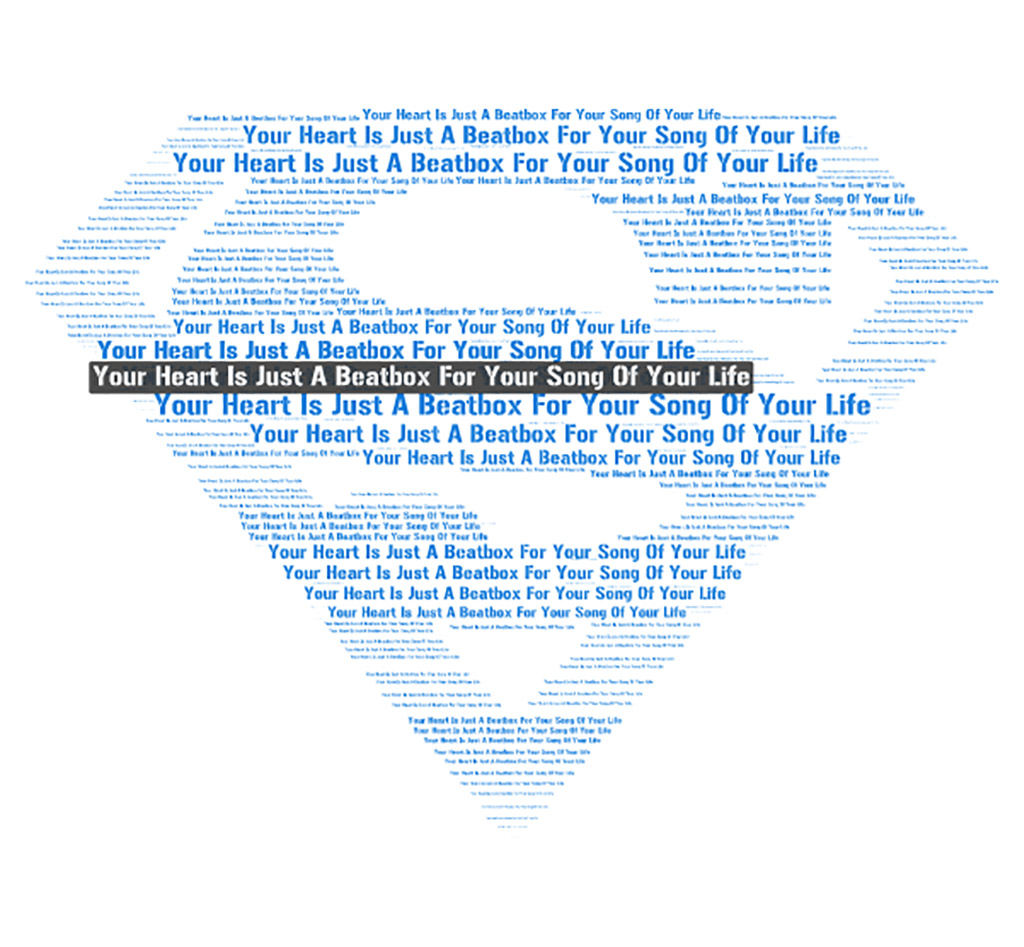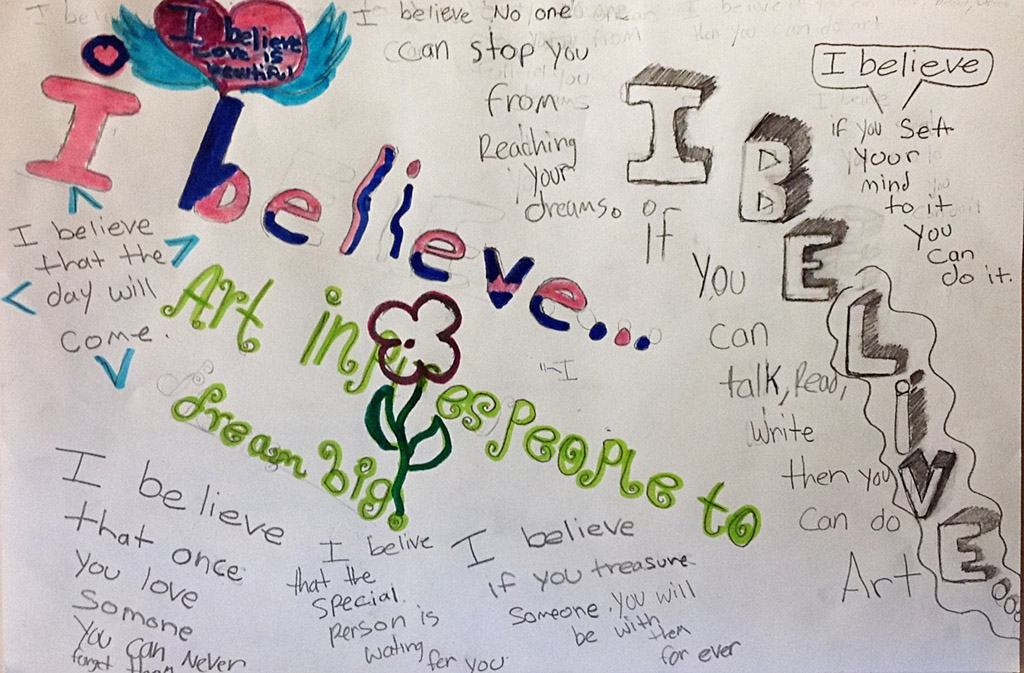
This project explored the idea of a Manifesto as a way to help my students begin to build a thriving creative community, in a setting where creativity and thinking outside the box is generally discouraged. Students were introduced to the idea of a manifesto. They then utilized their new knowledge and understanding to create both individual and a group/class manifesto(s) that guided their curriculum and choice-based instruction throughout the year.
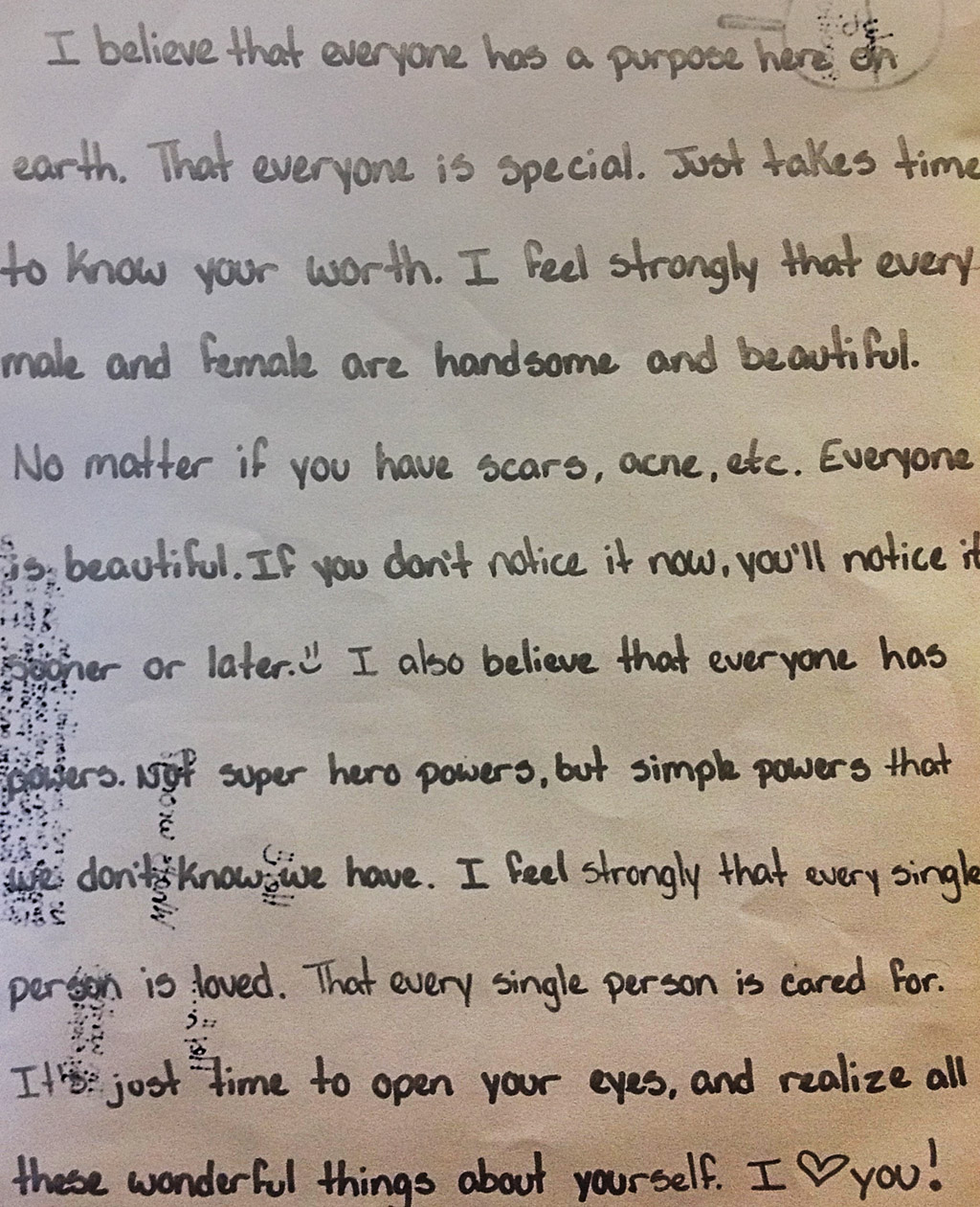
Goals
Students will understand that:
- People often tend to follow rather than lead in society.
- As technology advances, our own power decreases, because use of technology requires willingly giving up personal information.
- Our society influences our ability to identify with others.
- We often form our identity based upon our culture and socioeconomic status.
- As time passes, our understanding of the world increases, and with it our power to make knowledgeable decisions.
- We are influenced by mass media.
- Communication is a tool for control.
Objectives
Students will be able to:
- Work collectively on a team.
- Understand what a manifesto is.
- Explain a manifesto.
- Write a manifesto.
- Draw conclusions from textual and/or visual information.
- Generate questions related to essential questions in order to facilitate learning.
- Compare, contrast, and evaluate multiple texts with similar themes.
- Connect various texts to support a particular point or topic.
Connections & Questions
Cross-Curricular Connections
- Visual arts can be used to convey a message.
- Visual art media can be manipulated and used for manipulation.
- Visual arts can be used for educational purposes.
Guiding Questions
- What is a manifesto?
- How does a manifesto build community?
- How will our class manifesto build community?
- How will our class manifesto guide our community throughout the year?
- How can we work together to build a thriving creative community?
- How does the individual affect the collective?
- How can we work together collectively to enhance one another’s capacity for individual expression?
- How do you show the world who you are and what you stand for?
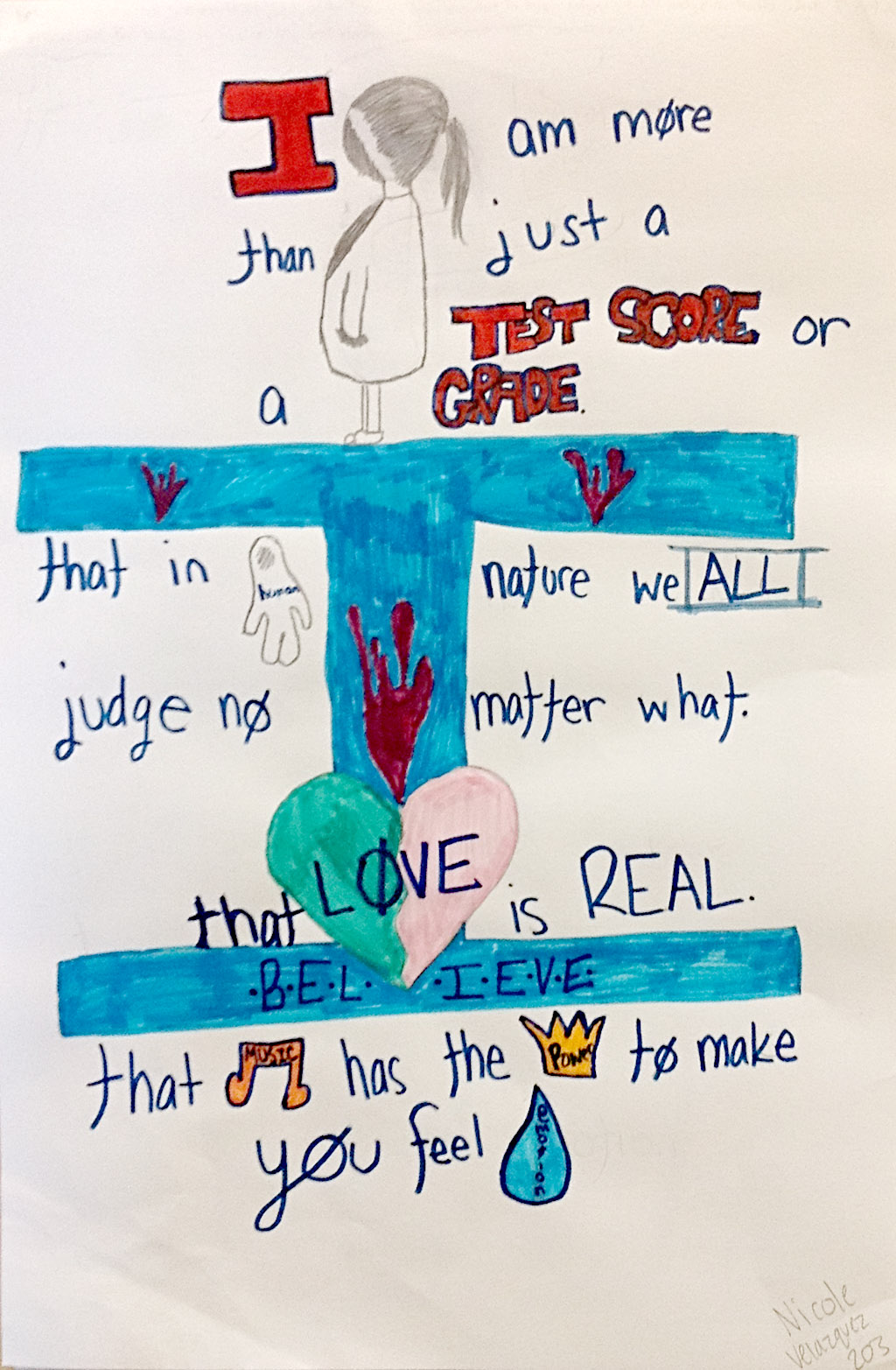
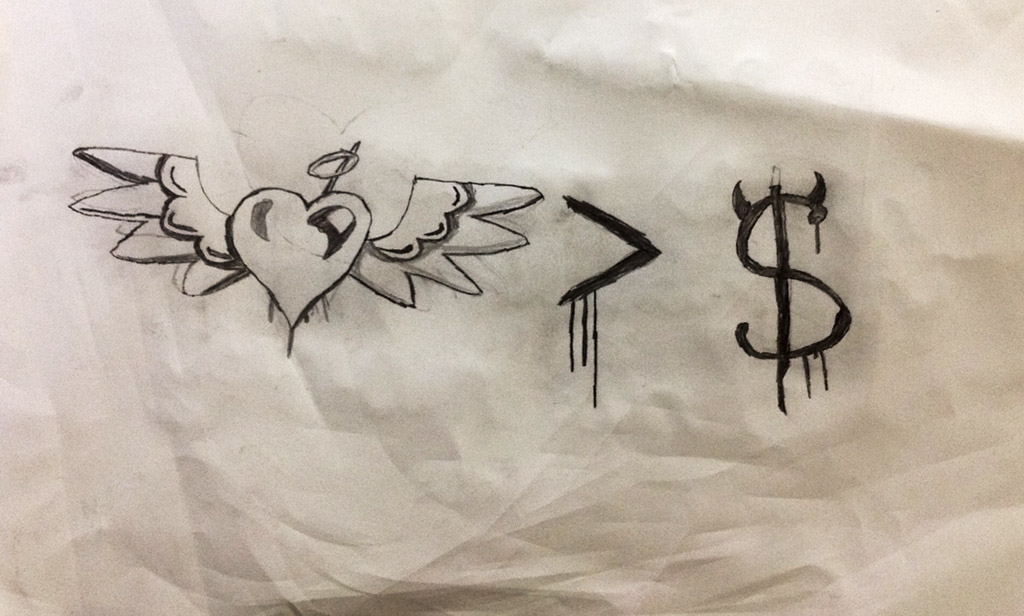
Documentation + Assessment
What did the students do to record their process?
- Students created visual personal manifestos.
- Students created visual art class focused manifestos.
What did the students do to reflect on/assess their process?
Students shared out during open mic sessions.
Students participated in group discussions.
Timeframe + Learning Activities
Timeframe
- Introduce manifestos, discussing the importance of manifestos and how they can be used as a guide.
- Create individual personal manifestos.
- Share out through an open mic session. Everyone is expected to share the gist of their manifesto out to the class in 30 seconds or less.
- Create individual art class focused manifestos.
- Share out through the open mic process again.
- Create an art class manifesto that everyone agrees on to guide the curriculum for the year
Learning Activities
After developing the manifesto together, students engaged in a variety of activities:
- Students participated in a discussion centered on the idea of shelter and space.
- Students participated in a sticks-and-tape activity, creating an outdoor temporary space to build community. Students were given various-sized wooden beams and and duct tape and were instructed to work together to build a structure.
- Students participated in various discussions, dissecting classroom communities and manifestos.
- Students created personal manifestos.
- Students created art manifestos.
- Students participated in open mic sessions.
- Students participated in an MCA field trip and aligned discussions.
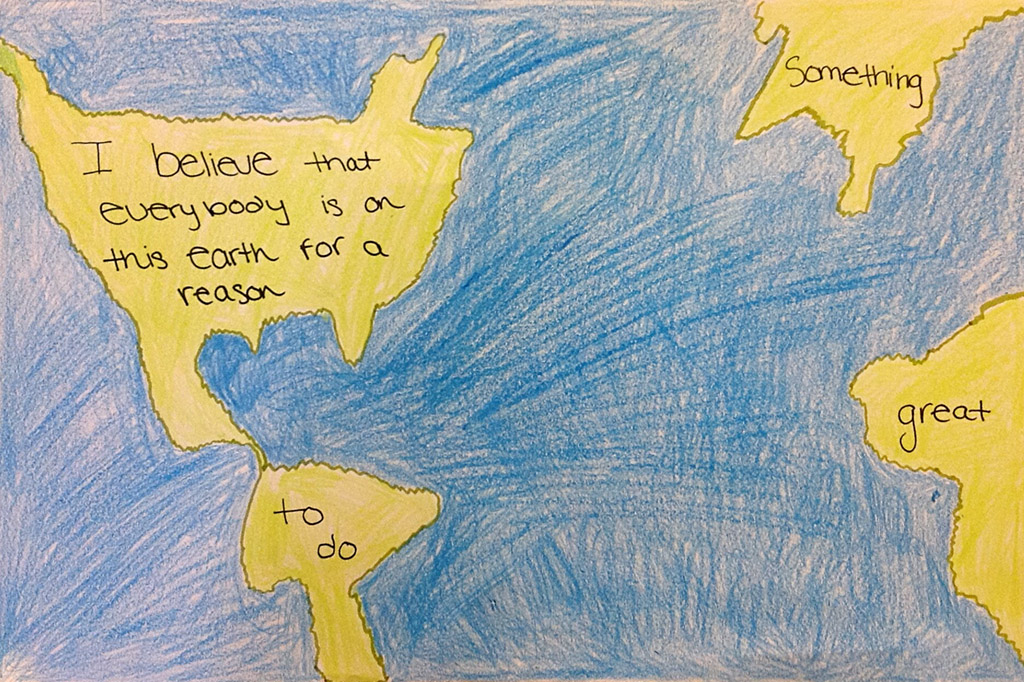
Materials
- Examples of manifestos.
- A variety of drawing supplies.
- Various-sized wooden beams and duct tape
- Various websites for technology alternatives, i.e. wordle.net or pixlr.com.
MCA Connections
- Students visited the MCA to explore and discuss The Freedom Principle exhibit, a collection of artworks based on artist manifestos.
- Students compared and contrasted the effect their manifesto has on their creative output in relation to the artwork in The Freedom Principle.

References + Resources
Examples of Manifestos:
Other Resources:
- Tagul - Word Cloud Art
- FoxVox Text to Speech software
- Pixlr photo-editing apps
- Naomi Beckwith and Dieter Roelstraete, eds., The Freedom Principle: Experiments in Art and Music, 1965 to Now (Chicago: University of Chicago Press, 2015).
Class Documentation
Alexandra Giannopoulos
Scammon Elementary School
Alexandra Giannopoulos has been teaching for eight years, and has been a Middle School CPS art teacher for four years. Her students are 97% low-income and are primarily Hispanic American; many of them are first and second generation, with minimal understanding of cultures other than their own. Alexandra sees her students one day a week for about 50 minutes. Her art classes are focused on combining art with the students language arts and social science subjects.
Alexandra reflects on her process:
This project was socially engaged because it tackled an issue that students were dealing with in their school community. The students were the center of the project because they were the decision makers. They facilitated the discussions and created the work. The open mic sessions, the sticks-and-tape community building activity, and the use of manifestos to guide our curriculum towards expanding art beyond the classroom and into the school were very successful moments in this project. An obstacle I encountered was creative resistance from the school community. My school is heavily technology based and students are accustomed to “googling” everything or finding a quick fix to their problems. We worked through this as a class through multiple discussions centered on the artwork of “The Freedom Principle” and other contemporary artworks.
